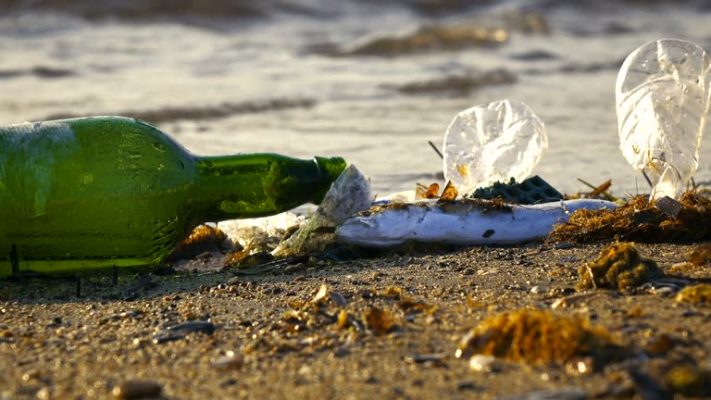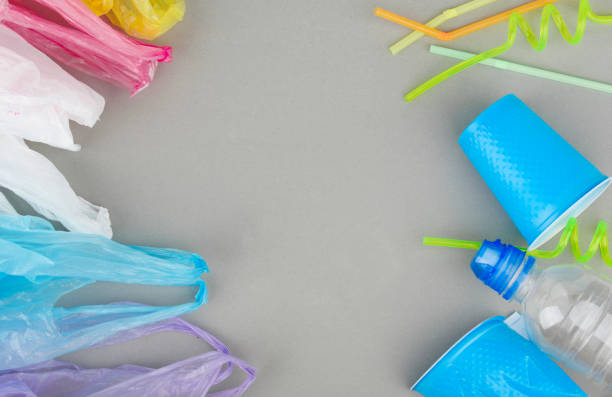- What Are Recycled Ocean Plastics?
- Why Are Apparel Makers Using Recycled Ocean Plastics?
- Major Apparel Makers Leading the Way
- Benefits of Using Recycled Ocean Plastics in Fabrics
- Challenges Facing Apparel Makers
- The Future of Apparel Makers and Ocean Plastics
- How Consumers Can Help
- Conclusion
- About IGREEN TEX
- IGREEN TEX VIETNAM CO LTD
In recent years, sustainability has become a key focus in the fashion industry. One of the most exciting developments is using recycled ocean plastics in fabric production. Apparel makers around the world are embracing this eco-friendly trend to reduce waste and create greener products. Between 2020 and 2024, more and more companies have shifted towards using ocean plastics, aiming to make fashion more sustainable.
What Are Recycled Ocean Plastics?
Recycled ocean plastics come from waste materials collected from the ocean. These include plastic bottles, fishing nets, and other debris. The waste is processed into tiny pellets, which are then turned into fabric fibers. These fibers are used to create various clothing items, from shirts to jackets. Apparel makers are taking this initiative to help clean up the oceans and reduce plastic pollution.

Why Are Apparel Makers Using Recycled Ocean Plastics?
Plastic waste in the ocean is a massive problem. It harms marine life and disrupts ecosystems. Over 8 million tons of plastic enter the oceans each year. By using recycled ocean plastics, apparel makers can reduce this pollution. They are transforming waste into high-quality fabrics that are both durable and stylish.

Another reason for this shift is consumer demand. Today’s shoppers are more eco-conscious than ever. They want to buy from brands that care about the environment. Clothing made from recycled ocean plastics appeals to these consumers. It gives them a way to make responsible choices while still enjoying fashionable products.
Read more: Circular Economy in Apparel Fashion
Major Apparel Makers Leading the Way
Several well-known apparel makers have taken the lead in using recycled ocean plastics. Some brands have partnered with environmental organizations to collect and repurpose plastic waste.
- Adidas: In partnership with Parley for the Oceans, Adidas has launched a range of shoes and clothing made from ocean plastic. Since 2020, they have expanded their collection and committed to using more recycled materials in their products.
- Patagonia: Known for its commitment to sustainability, Patagonia has also embraced recycled ocean plastics. The brand uses these materials in its outdoor gear and activewear. They have been a key player in pushing the industry towards eco-friendly solutions.
- H&M: As part of its Conscious Collection, H&M has incorporated recycled ocean plastics into some of its clothing lines. The global fashion retailer is working to make its supply chain more sustainable.
These brands are proving that using recycled materials is not only possible but also profitable. They are setting an example for smaller companies to follow.
Benefits of Using Recycled Ocean Plastics in Fabrics
There are several benefits to using recycled ocean plastics in the fashion industry:
- Reducing Plastic Pollution
By using recycled ocean plastics, apparel makers are helping to remove waste from the oceans. This reduces the amount of plastic harming marine life and improves the health of our oceans. - Lowering Carbon Footprint
Producing new plastic requires a lot of energy and resources. Reusing existing plastic helps save these resources, lowering the carbon footprint of the fashion industry. - Encouraging Sustainable Practices
The use of recycled ocean plastics encourages other companies to adopt sustainable practices. As more brands make the switch, the fashion industry as a whole becomes more eco-friendly. - Consumer Appeal
Today’s consumers are more interested in sustainable fashion. By offering clothing made from recycled materials, apparel makers can attract eco-conscious buyers. This gives them a competitive edge in the market.
Challenges Facing Apparel Makers
While the benefits are clear, there are some challenges that apparel makers face when using recycled ocean plastics.
- Sourcing Enough Material
Collecting plastic waste from the ocean is not an easy task. It requires time, effort, and specialized equipment. This makes it challenging for companies to source enough materials to meet demand. - Maintaining Fabric Quality
Turning ocean plastics into high-quality fabrics can be difficult. The fibers must be strong and comfortable enough for everyday wear. While technology has improved, some apparel makers still face issues with fabric durability. - Cost of Production
Using recycled materials can be more expensive than traditional fabrics. Collecting, processing, and converting ocean plastics requires more steps and technology. This can increase the cost of production, making it harder for smaller brands to compete.
Despite these challenges, many companies are committed to finding solutions. They understand the importance of reducing plastic pollution and creating more sustainable products.
The Future of Apparel Makers and Ocean Plastics
The use of recycled ocean plastics is expected to grow in the coming years. Between 2020 and 2024, more apparel makers have invested in sustainable materials. This trend is likely to continue as technology improves and consumer demand increases.

New innovations are also being developed to make recycling more efficient. For example, some companies are working on ways to break down plastic waste more easily. This could lead to an increase in the availability of recycled materials, making it easier for apparel makers to source them.
In addition, governments and organizations are pushing for more eco-friendly practices in the fashion industry. There are growing regulations around plastic waste and sustainability. These regulations could encourage more companies to adopt recycled materials in their products.
How Consumers Can Help
Consumers play a big role in the success of sustainable fashion. By choosing to buy from brands that use recycled materials, they support apparel makers who prioritize the environment. When shopping, look for labels that mention recycled ocean plastics or eco-friendly practices.
Another way consumers can help is by reducing their own plastic use. By cutting back on single-use plastics, they can prevent more waste from entering the ocean. Supporting ocean clean-up efforts is also a great way to make a positive impact.
Conclusion
Apparel makers are playing a key role in reducing ocean pollution by using recycled plastics in their fabrics. This trend is reshaping the fashion industry, offering a more sustainable future. With brands like Adidas, Patagonia, and H&M leading the way, more companies are expected to follow suit.
While challenges remain, the benefits of using recycled ocean plastics are clear. By reducing plastic waste and creating eco-friendly products, apparel makers are helping to protect our planet. As consumers continue to demand sustainable fashion, the future of recycled materials in clothing looks bright.
This shift towards sustainability is not just a trend; it’s a movement that will shape the fashion industry for years to come.
About IGREEN TEX
IGREEN TEX is a provider of fashion and textile products, offering a wide range of apparel both domestically and internationally. Our commitment to quality ensures that our products not only meet the highest standards but also promote eco-friendly practices.
IGREEN TEX VIETNAM CO LTD
Address: No. 83, A4 Street, Ward 12, Tan Binh Dist, HCMC
Tax code: 0315844409
Email: info@igreentex.com
WhatsApp/Viber/Zalo: +84 938.045.900